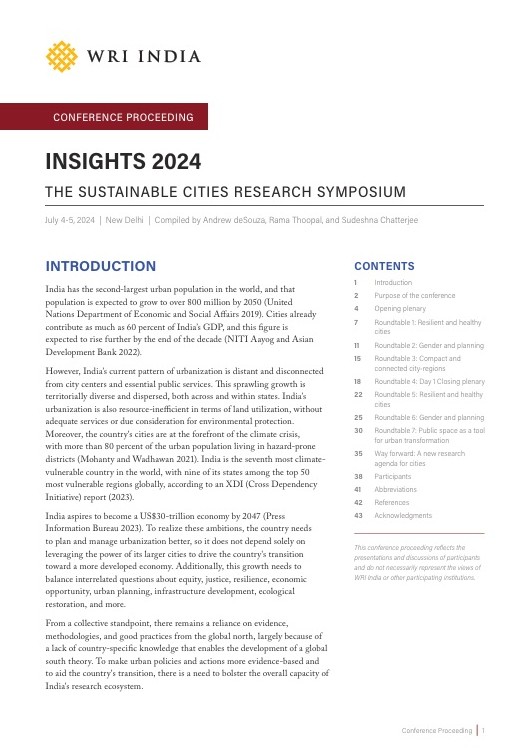Photo essay: People-centred street designs as lessons from Raahgiri Day Street stories
by -
Cities throughout India and the world are now in the process of recovering from a never-seen-before complete lockdown that was implemented as a safety measure against the ongoing novel coronavirus induced pandemic. This was necessary to maintain physical distance, leaving empty streets around the world as we sat indoors, wondering what we were missing out on. Cities across the globe are now working towards reimagining streets to accommodate the new normal in a post-COVID reality. Keeping in line with this, the Indian government has encouraged authorities to create people-friendly public places.
Raahgiri Day is a weekly open street event that allows people to reclaim public spaces. It is a concept that creates space to enable human interaction equally for everyone, irrespective of their backgrounds.
I have been part of the Raahgiri Day organizing team for almost four years now and have closely observed small on-ground stories transpire during these events. In this blog, I share my experiences through photographs and text that illustrate how in Gurugram, streets can be adapted to include more people. My experiences also highlight how these events often become a channel for steering a conversation in different fields and developing opportunities for new ideas and innovation. These events empower communities to participate freely, leading social, sustainable and economic transformation, which is especially pertinent to note in the current times.
1. Inclusive stories
Raahigri Day, held for 3-4 hours every Sunday morning for more than six years now, sees people from all age groups, coming from different walks of life and diverse backgrounds participate in exciting activities such as Zumba training, yoga, running and cycling. These interventions also create equal learning opportunities for all, thereby allowing for a wide exchange of thoughts and experiences.

Participating in one of the Raahgiri Day events on July 22, 2018, an elderly couple seen here relive their childhood days while participating in a street game called Pitthu Gram or Seven Stones with children. Limited accessibility to public spaces and lack of social interaction has been one of the main concerns for the elderly. Such events also create an avenue for the elderly to be able to learn as well as share their experiences with the younger folk.

Girls take self-defense training while a group of boys observes from a distance. This picture is from the initial months of my work with Raahgiri and shows how being self-reliant is a requisite skill for women to walk safely on our streets.

As a part of the Women’s Day celebration in 2019, a girl from an economically weak section joins other women onstage. It was heartwarming to see her confidence and happiness at the inclusivity she enjoyed on the public platform with women from different economic strata.
2. Skill Development stories
Raahgiri Day is free for everyone and simultaneously provides a platform for not-for-profit organizations to provide services such as sports, performing and visual art training to participants. The platform makes space for fresh talents to emerge, ensuring that people learn various performing arts such as street dancing and play acting.

Children from a nearby urban village, Chakkarpur in Gurugram that lacks open spaces, participate in a sports training done by an NGO, Bhagta Bharat. This training, over four years from 2013-18, has helped build a positive and healthy growth for these children from various age groups.

A boy from a nearby village became the highlight during one of the Raahgiri Day events when he read a poem that he had written. Later, he got the opportunity to sing and write for official gatherings organized by the Municipal Corporation of Gurugram. Such opportunities are only possible for everyone when accessible public platforms are available for new talent to practice and build confidence.
3. Educational stories
Events during Raahgiri Day also hold activities that focus on awareness and educating people. Engaging campaigns like walkathons, pledges and quizzes concentrate on creating awareness on issues like road safety, women empowerment, right to vote, tree plantation, air pollution, etc.
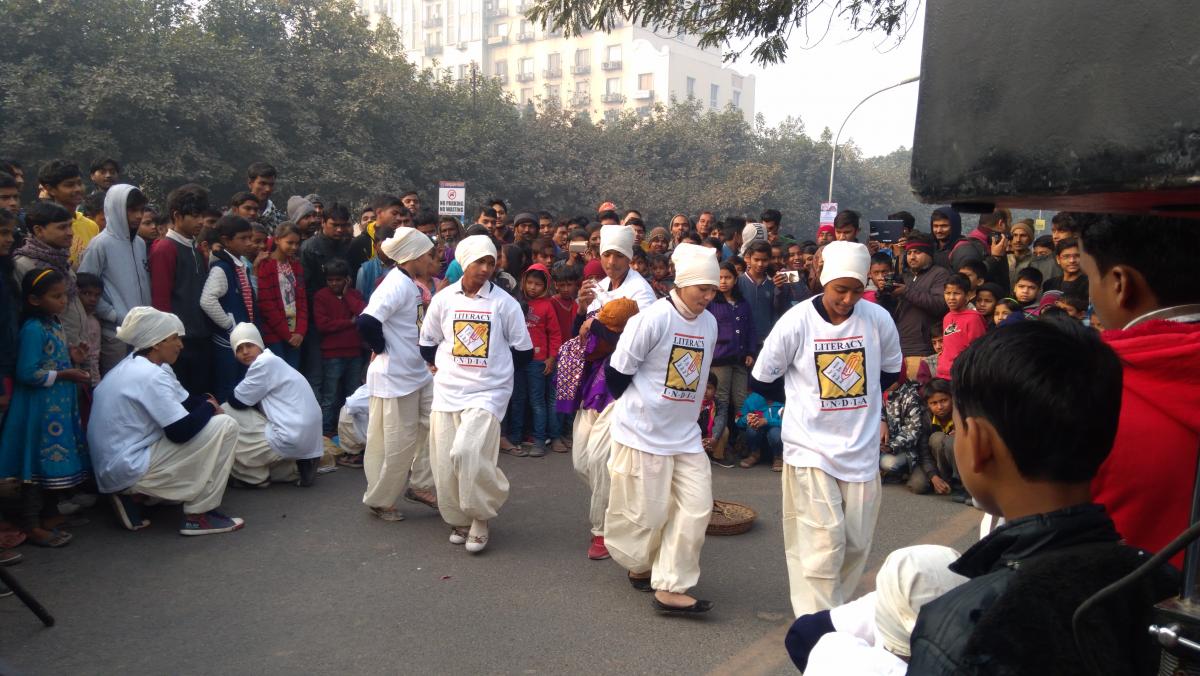
This picture is a throwback to January 2017. A group of children supported by Literacy India, an NGO, raise awareness on female infanticide through a nukkad natak (street side play). In the audience is a mixed crowd, who are a permanent fixture at these events.
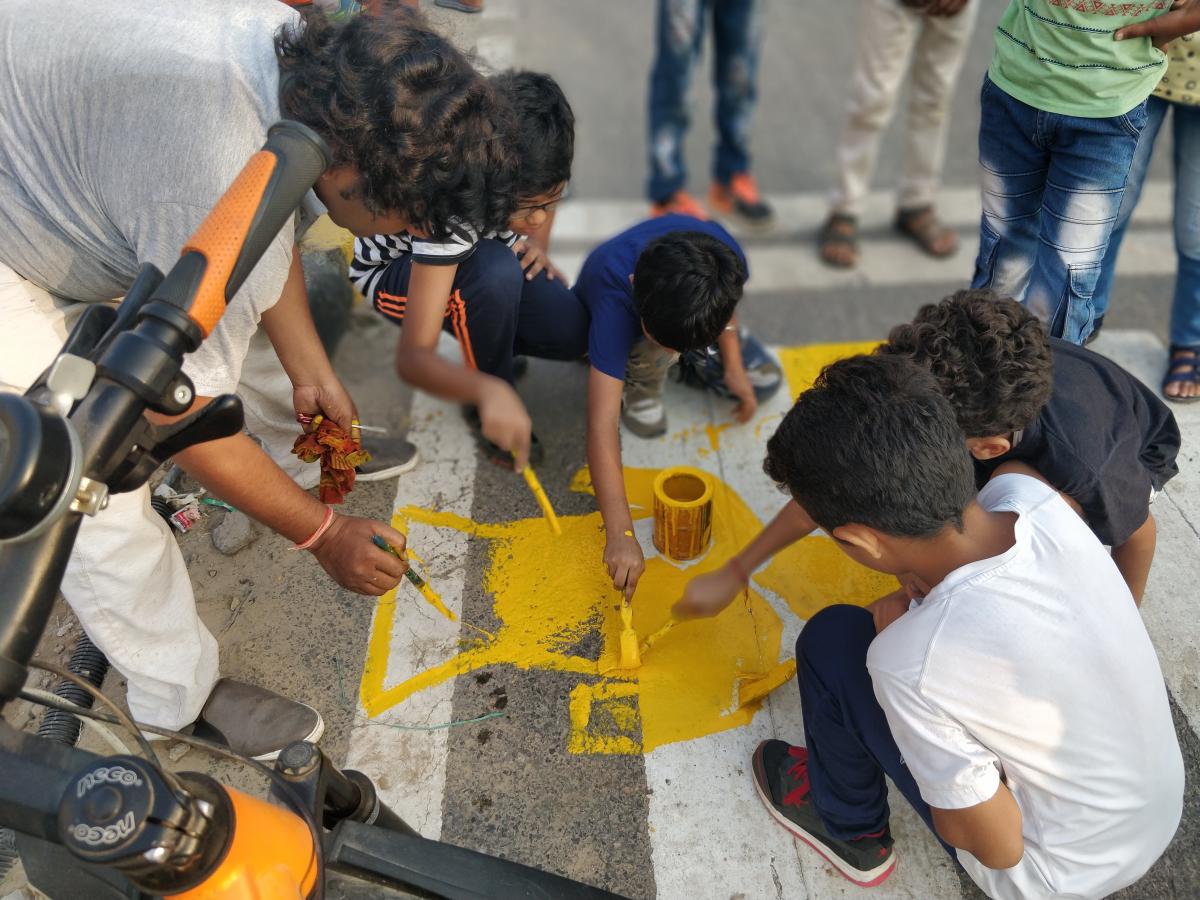
During one such event, a road safety campaign was organized by the Raahgiri Day team to engage children. Instead of learning from just textbooks, they participated in an artist-led live-action event and painted a pedestrian crossing. With requisite permissions from local authorities, this pop-up activity saw children join voluntarily to enjoy as well as learn about road safety.
4. Engaging stories
Raahgiri Day is a self-sustaining event with a team of volunteers who help organize it week after week. Citizens have, over the years, taken ownership along with city authorities to run the show. There is also scope for volunteers to make arrangements, creating activity zones, or ensure outreach for these events. These collaborated efforts have helped create a bond between civil society, government bodies, and citizens.
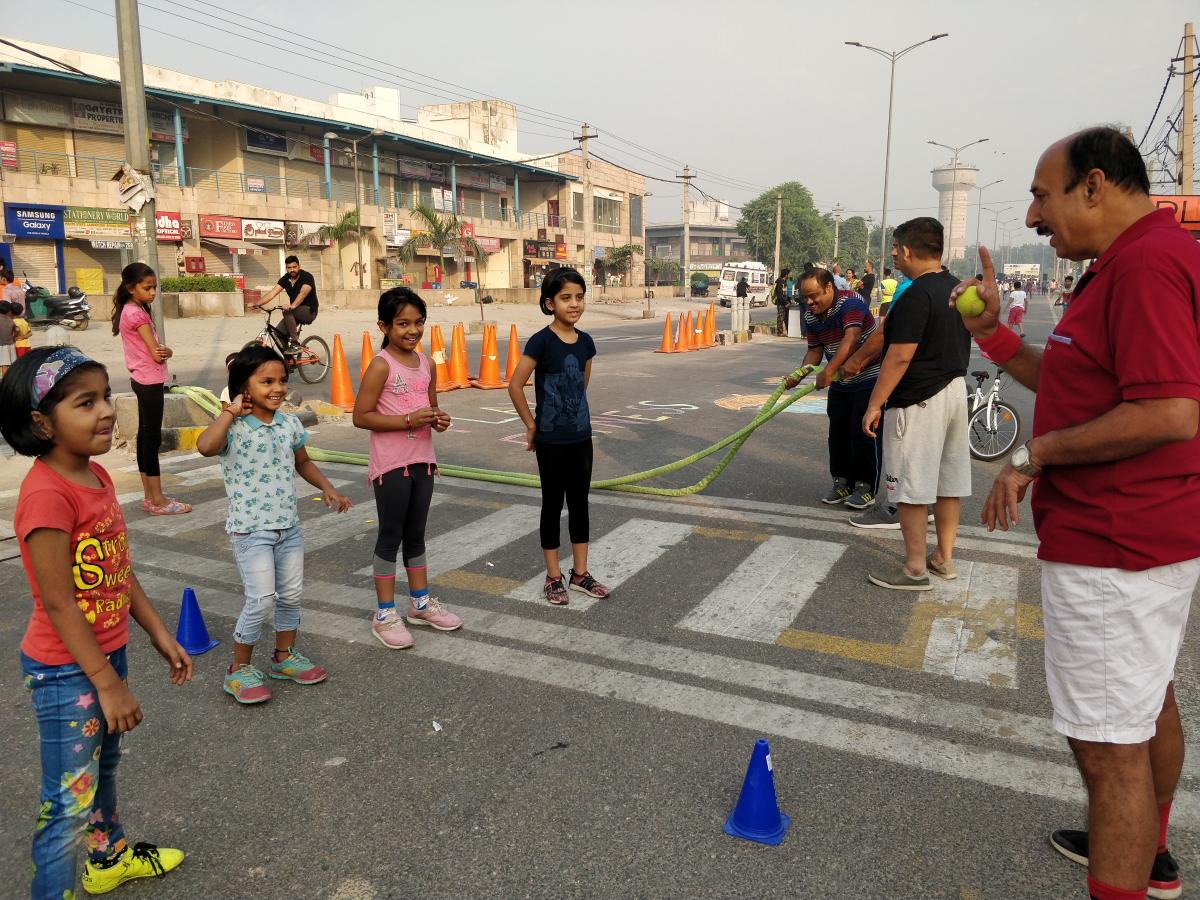
The picture here is from October 2018, when a volunteer organized street games for children. Enthusiastic about encouraging street games for children to ensure a healthy living, he ideated and developed many games for children according to their interests.
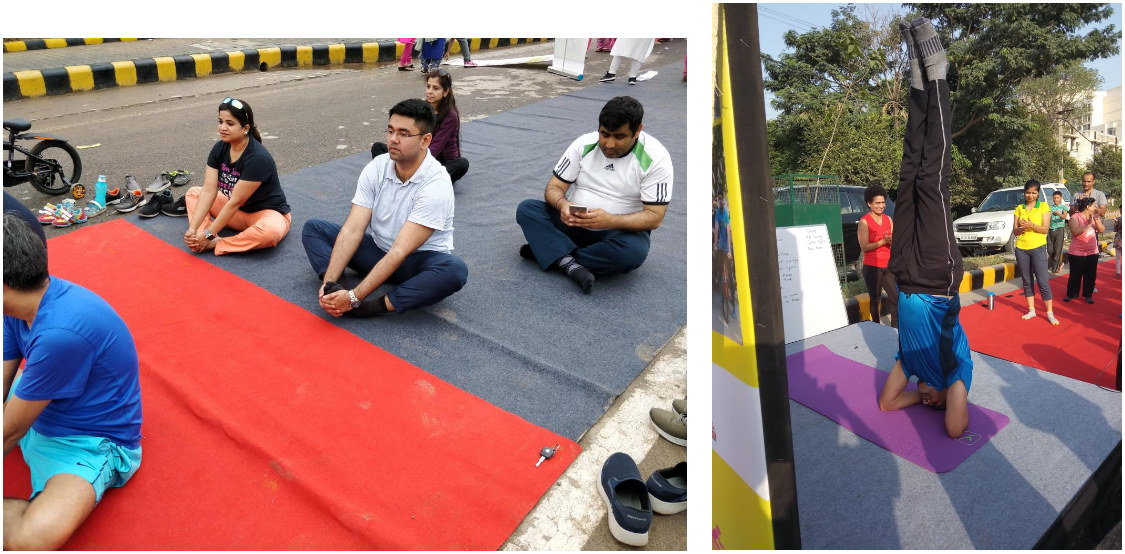
Raahgiri Day events also see senior officials from civic authorities take initiative to help organize the event. They also visit and participate along with citizens. These efforts often lead to forming consortiums for various other tasks required for the transformation of our cities.
The road ahead
These events set an example of how a community can socialize every day and exist together when sufficient infrastructure is available. Public infrastructure such as public transport, open spaces and city streets should include learnings from such events to bring in desired changes in the design process.
Raahgiri Day gives us two opportunities. First, it provides us with a place to experiment and play with ideas of Tactical Urbanism. Second, it would be beneficial for city authorities like Gurugram Metropolitan Development Authority to use these outcomes to redefine their current annual expenditure of over INR 400 crore on road infrastructure. The impact can also scale up to other public infrastructure projects.
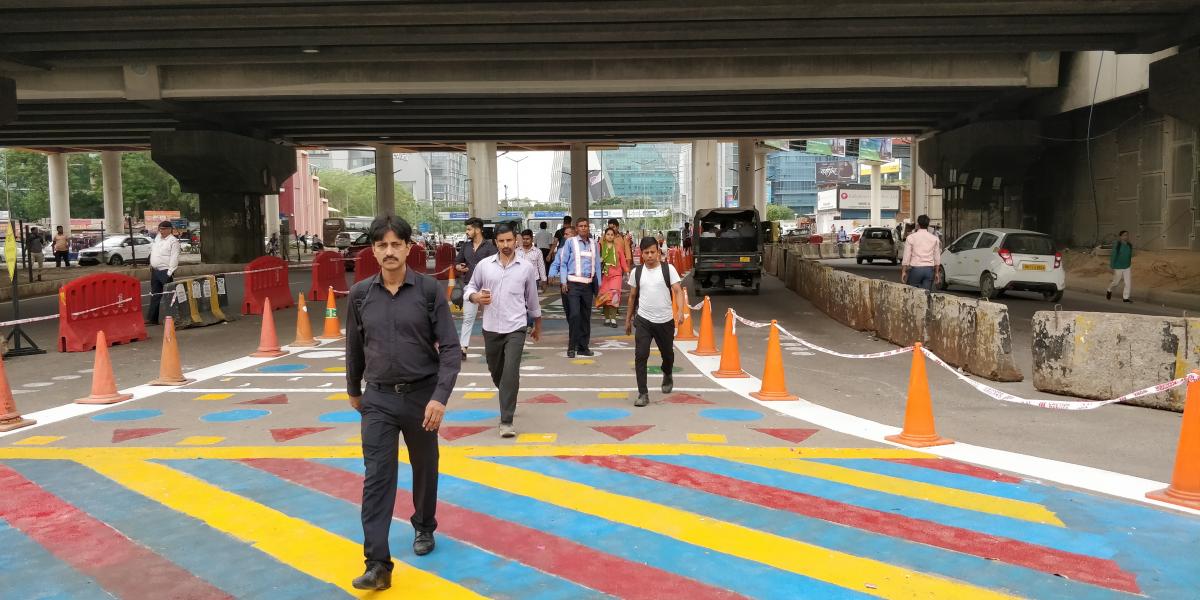
Raahgiri Day has been held in all districts in Haryana for more than two years now. Thus, the first step at state level should be creating similar street design pilot projects in all districts. Further, state-level bodies should develop policies to adapt from learnings from such projects so that their application in actual design practice is made easier. It may then allow the annual budgets of each district to create permanent execution of multiple projects for scaling up the impacts.
All photos by Priyanka Sulkhlan/WRI India.

